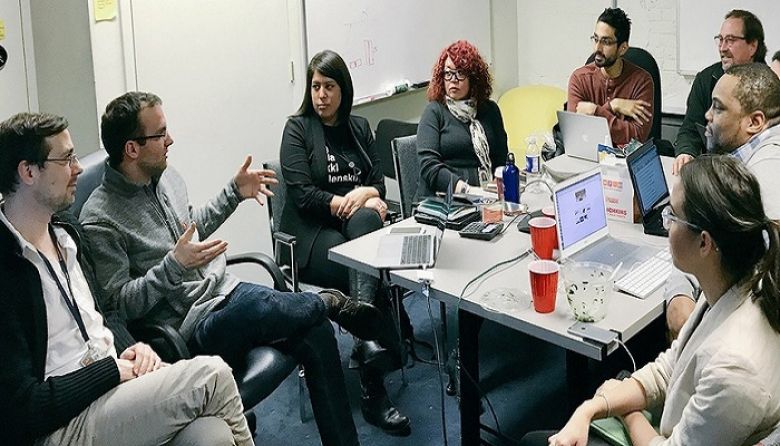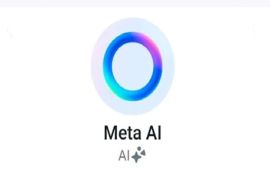The U.S. Digital Service has recently worked with the SBA, CMS and CBP to modernize their technology by leveraging both cultural change and IT expertise.
In 2018, as federal IT modernization efforts pick up steam, and as technology upgrades become a central element of the President’s Management Agenda, it may be easy to forget that the U.S. Digital Service has been laying this track for years.
With an eye toward modernizing federal IT across the board, in 2014, the White House established the U.S. Digital Service, drawing talent from the team that helped get the Healthcare.gov site back on track after its stuttering first steps.
In addition to tech expertise, USDS provides independence and an outsider’s perspective. The agency brings private-sector IT experts into government for short-term stints to help agencies’ IT teams solve complicated and long-standing tech challenges.
“We have conversations across the entire agency to elevate the voices of people who have never had the ability to say: This thing I have been doing for 10 years doesn’t work,” says Shannon Sartin, a USDS executive director. “That can be a hard thing to say, especially when you are bringing that to someone at a higher pay grade.”
Sartin’s team focuses on improving processes within the Department of Health and Human Services, one of several agencies where USDS has posted recent wins. As USDS’s latest report to Congress shows, it’s undertaken efforts at the Small Business Administration, HHS and the departments of Veterans Affairs and Homeland Security.
The work USDS has done recently serves to illustrate the ways in which the agency has evolved from tackling short-term crises to helping agencies make broad IT changes and improve services for citizens.
USDS Teams with SBA, VA to Improve Citizen-Facing Services
At SBA, for example, USDS came on board in 2015 to tackle an urgent need. By mid-2016 it had launched the Certify.SBA.gov portal to replace a legacy paper-based certification system for small businesses looking to engage with SBA.
In 2018, the USDS team pushed further, expanding the site’s functionality around so-called “8(a)” businesses, those owned by socially and economically disadvantaged people. The portal allows users to determine their eligibility in multiple SBA contracting programs. Business owners can fill out forms and check their status online, rather than having to visit SBA offices.
Self-service is likewise a major theme in USDS’s ever-expanding work for the Veterans Affairs Department. The launch of Vets.gov in 2015 gave veterans digital access to a range of services and it’s been expanded in the past year. Veterans can now appeal claims decisions online and track the status. Another new feature allows veterans to save work in progress and get updates on their benefits availability.
CMS Embraces Agile Software Development
Sartin’s work for the Centers for Medicare & Medicaid Services (CMS) offers a typical example of how USDS goes about implementing these kinds of upgrades. Her team didn’t just update aging infrastructure — it brought a new methodology to the business of IT at CMS, a component of HHS.
CMS asked the team to help create a system where doctors would be compensated not for the volume of work they did, but for the quality of that work. To pull together all the disparate data needed to make this possible, USDS had to bring the agency up to speed with agile software development.
“This is an iterative approach to product development, where you make adjustments and take the time to build pieces,” Sartin says. “So, we had to create a mindset of flexibility. We had to have people be willing to have a conversation when problems come up, rather than just saying ‘everything is fine’ when it’s not fine.”
CMS officials say that agile mindset drove the agency’s ability to embrace the new compensation methodology. “They were teaching us how we should organize ourselves to function in the most optimal way to bring our customers what they need,” says Kate Goodrich, director of the Center for Clinical Standards and Quality and chief medical officer at CMS.
“USDS was able to organize us to implement agile, and they served as coaches for us and our contractors,” she says. “In my shop, we are now using agile for all of our IT development because USDS came in and taught us how to do it.”
USDS Helps Agencies Get Comfortable with New Tech
Software methodology is just one piece of the puzzle. The USDS approach to modernization also includes a push for creative procurement processes, as well as efforts to cut through institutional red tape.
In the short time since its inception, USDS leaders say, the office has gone from being a digital firefighter to guiding federal agencies toward a bigger-picture view of IT transformation.
“When we first arrived, it was really about firefighting, fixing specific technical problems,” says Stephanie Neill, a USDS executive director whose team supports DHS IT projects. “Over the years we have seen our partners move out of that danger zone and into a more mature state, where now we are tackling higher-order problems, exploring new design systems, new product development systems.”
In steering agencies toward this more comprehensive approach, USDS encourages its clients to pursue technology in previously untried directions. At DHS, for instance, this meant a migration to the cloud.
USDS helped Customs and Border Protection (CBP), a DHS component, redesign its IT for the agency’s Trusted Traveler Programs. To deliver a scalable, modernized back end and a more user-friendly front end, USDS ported the entire system to the cloud in just nine months. It has since used the cloud’s inherent flexibility to release over 50 system enhancements without any downtime.
“Cloud was strongly championed by their CIO, but this was the first major application to move there. It was very new to them,” Neill says. She suggests that DHS’s willingness to follow USDS into uncharted territory reflects a growing openness among federal agencies to explore less conventional approaches to digital transformation.
“When we first came, cloud was unknown and scary, whereas today every CIO that I talk to is talking about moving their application to the cloud,” she says. “That same evolution has happened across a lot of different areas in a very short period of time.”
This content is made possible by FedTech. The editorial staff of Nextgov was not involved in its preparation.







